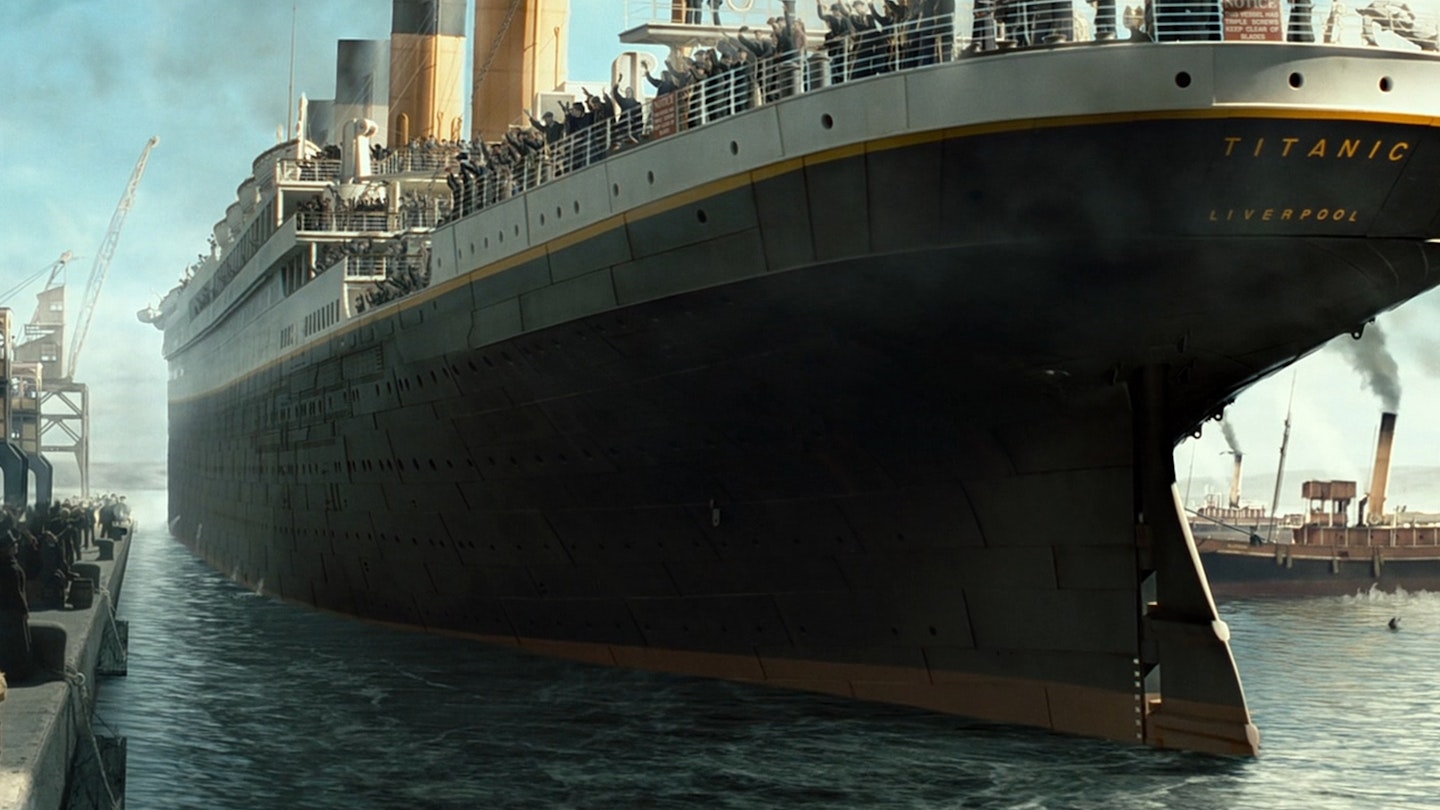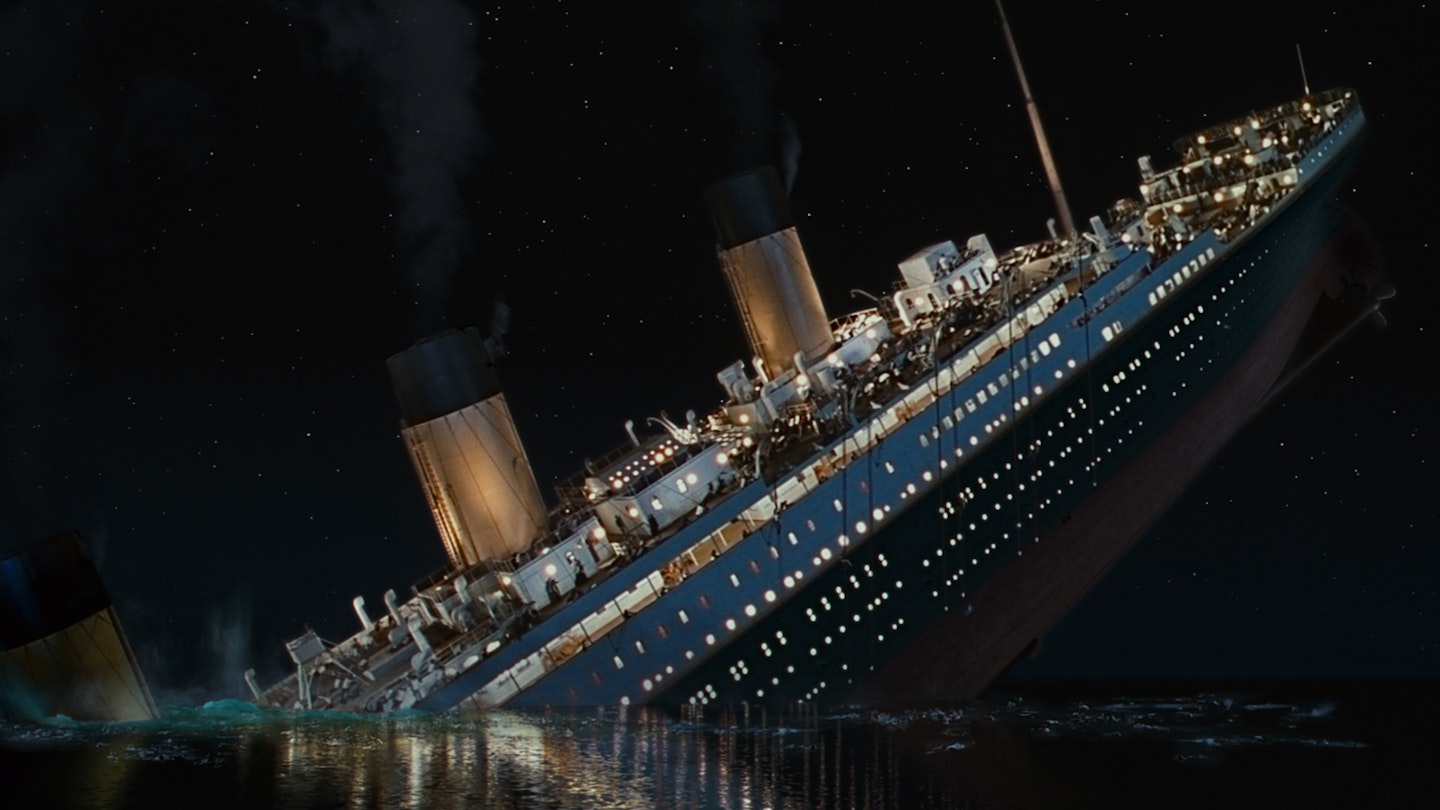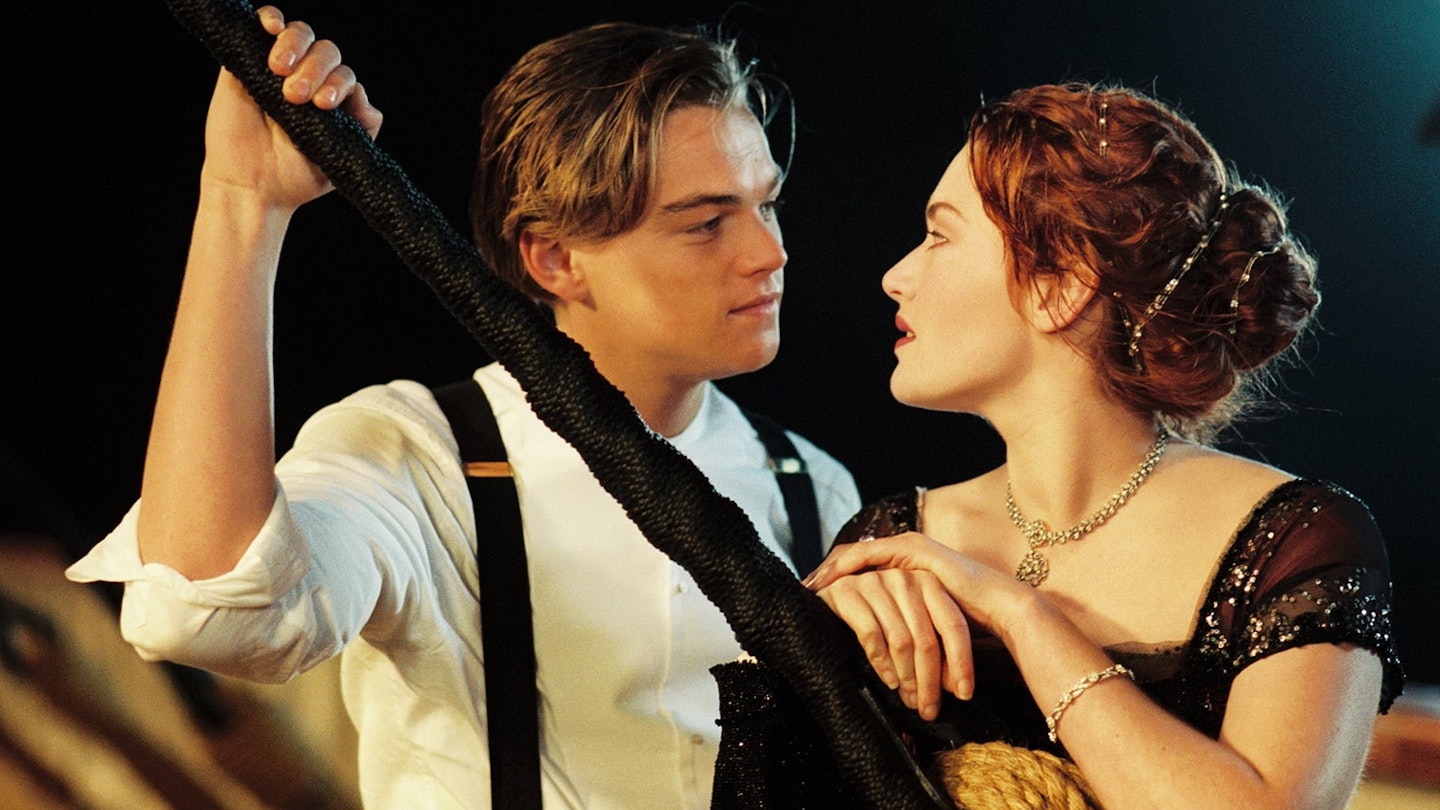As James Cameron’s Titanic steams back into cinemas, you’d be forgiven for thinking it was a film about two star-cross’d lovers who have to break up when one of them can’t fit on a door. The drawing, the diamond, the back seat of the car, “I’ll never let go”, the bit where they tell some boring old biddy to shut up in unison: all great stuff. But the passion between Leonardo DiCaprio's Jack and Kate Winslet's Rose isn’t the only love story here. In fact, their whirlwind romance isn’t even the most important bit of Titanic.
Nope, this is a movie about Jim Cameron falling head over heels for a boat. And seeing Titanic back on the big screen once more shows, yet again, just how unsinkable that love between man and boat was. When we see the Titanic off from Southampton, she’s twinkling in the golden September sunshine; dolphins leap and frolic in front of the bow. That swooping, swooning shot which leaves Jack whooping at the head of the ship and tracks back over the whole of the Titanic from bow to stern remains extraordinary. There’s as much giddy romance in that camera movement as there is between the human leads.
Combining model work and groundbreaking visual effects shots, Cameron and his team lovingly recreated the Titanic in all her sumptuousness: their giant 775-foot replica gave her heft and majesty, the tiny computer-generated passengers added life. There’s a reason Titanic kept people coming back to the big screen for months and months – Sugar magazine even found one girl and her mum who’d been to 84 screenings by May 1998 – and a good chunk of it is the sheer wow-factor of that boat. “If you didn’t appreciate the ship,” Cameron said later, “you couldn’t appreciate the sinking.” And there is nobody who appreciates the ship like James Cameron. Over the course of his many dives to the real wreck over the years – he did 12 while filming, and he’s up to 33 now – Cameron has ended up spending more time with the Titanic than its captain, Edward Smith, did over its four-and-a-half day journey.

Getting that sense of awe which you’d have felt at the docks in 1912 is key to the whole working. But watch again and it’s clear that the early sequences introducing the ship itself aren’t just narrative set-up: Cameron is just absolutely besotted with every single rivet in her hull. Look at that sequence where Captain Smith orders the ship to pick up speed – we follow his orders from the bridge, down through the chain of command, down and down and down, all the way to the stokers throwing coal into the furnaces, into the engine room where the camera looks up and down giant pistons and gears whirling and pumping. It feels like a little homage to Metropolis: there’s gushing steam, glistening metal, and everything looks absolutely colossal. You can almost hear Cameron whispering “phwoar” in your ear.
Like Jack and Rose themselves, the Titanic represents the most exuberant, confident edge of the modern world.
He loves this ship so much that it is – to conjure that old cliche (and hey, Cameron is all about using a cliche if it’s effective enough) – a character in its own right. It even almost talks to our heroes. When Young Rose is marched on board while Old Rose recalls that inside she was screaming, she’s answered by a shriek from the ship’s whistle. As Jack and Rose scramble for their lives through Titanic’s endless corridors, the groans and sighs of the ship as it starts to break apart mirror their desperation.
You can feel Cameron’s tenderness for its fate from the off – two and a half miles down on the floor of the Atlantic ocean, the submersible in the opening sequences finds someone’s glasses, a porcelain doll’s face, a crab crawling over a rusted fireplace hearth. The ship is a gravesite, and at the same time it’s a cadaver itself. Then in come those crass explorers, effing and jeffing, jamming their robot submersible through doorframes carelessly. They’re scavengers, robbing graves and forcing the old wreck to give up secrets which had been settled in the cold, fathomless depths. The hairy bloke with glasses and bad teeth keeps saying “shit”. Next to the ship’s graceful rest, it’s all very undignified.

Come the final reel, we watch as the ship’s stern slides silently into the deep. Like that old couple lying on the bed together, the ship accepts its fate. After everything you’ve been through with it, and all those slightly lustful shots of its interiors, it’s only a thumbs-up away from the emotional punch of the T-1000 slipping into the molten steel at the end of Terminator 2. Sob.
So why does it matter? Because this is a pivot point in Cameron’s career. Like Jack and Rose themselves, the Titanic represents the most exuberant, confident edge of the modern world. It’s glamorous, and a little overwhelming, and very full of itself. But before Titanic, his films generally saw the most exuberant, confident edge of the modern world as something cold and terrifying – something that wanted to steal your clothes, your boots, and your motorcycle, that pushed humanity beyond where it should go and into probable destruction. Mining in deep space, artificial intelligence, fiddling about in the deepest parts of the ocean: none of these things pan out smoothly for Cameron’s protagonists, generally speaking.
With Titanic, that outlook shifted. Despite the inherently tragic nature of the story, it brought out a different side of the director. The awe that Cameron feels for Titanic as a machine – as a vessel not just for its passengers, but for hope and exploration (it’s the ship of dreams, as about 15 different characters note within the first act) – has bled through into his work ever since. In Avatar, he dreamed up a future where, despite the destructive nature of humanity’s worst instincts, technology also opens up opportunities to cast aside our earthly bodies, and to more deeply connect with nature. The hubris and fear which technology brought with it in The Abyss, The Terminator and Aliens sits alongside something more hopeful. That voyaging spirit ties right back to Titanic, where the urge to go further and faster may have ended horrifically, but is played with a pained nobility.

Cameron’s misty eye for the Titanic itself is never more keenly-felt than in the film’s final sequence. As Old Rose drifts away, we go back to the old girl (well, old boat) as she once was: the crusty, grey wreck is flushed with colour and life again, and we’re welcomed back to that grand staircase. Jack, Rose, and the rest of the crew and passengers get their second chance in this farewell. Is it a dream? A fantasy? Rose steaming into the afterlife? I think it’s something else. It’s a look at the Titanic as Cameron sees it in his mind’s eye. He loves that boat, and in the final minutes of that epic runtime, he wants to make damn sure you’ll love it too.
Titanic is back in cinemas now
